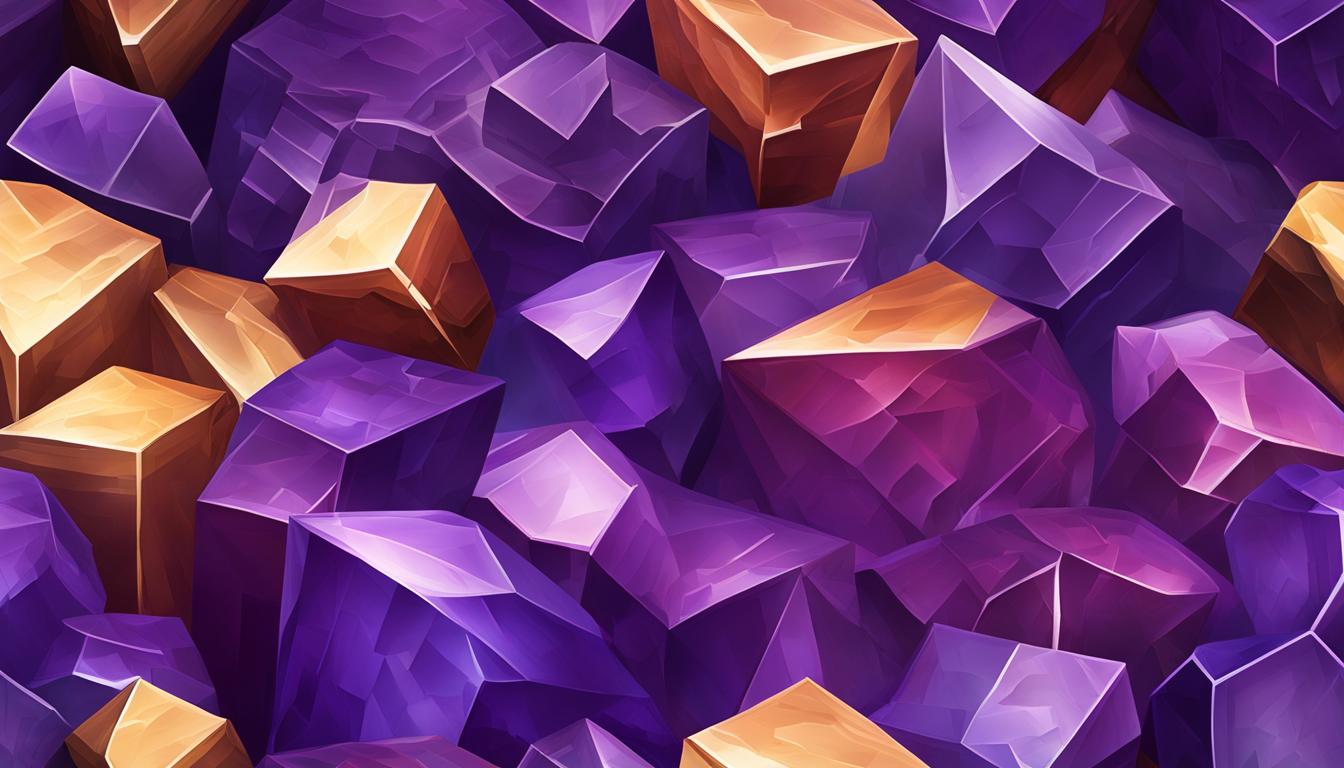Welcome to our comprehensive guide on amethyst growth in Minecraft! Whether you’re a seasoned player or just starting your Minecraft journey, understanding how to grow amethyst can greatly enhance your gameplay. In this guide, we will explore the various methods of amethyst farming, including manual and automatic techniques, to help you maximize your amethyst yield.
Key Takeaways:
- Amethyst farming in Minecraft is a renewable way to obtain amethyst shards and decorative blocks.
- Manual farming methods, such as the scaffolding method, float method, and hole method, can be used to efficiently farm amethyst.
- Automatic farming provides a consistent supply of amethyst shards but requires more complex setups.
- Understanding amethyst growth stages and mechanics is crucial for successful farming.
- Experimentation and creativity can lead to unique amethyst farms in Minecraft.
Manual Farming Methods for Amethyst Growth
When it comes to cultivating amethyst in Minecraft, manual farming methods prove to be more efficient than their automatic counterparts. Let’s explore three popular manual farming methods that can help you establish a thriving amethyst farm.
Scaffolding Method
The scaffolding method involves creating floors using blocks and utilizing scaffolding to access budding amethyst. By constructing multiple levels of scaffolding, you can easily navigate through the amethyst geodes and harvest the budding amethyst clusters. This method provides a straightforward and accessible way to farm amethyst in Minecraft.
Float Method
The float method is especially suitable for amethyst geodes located under the ocean. To implement this method, you will need to flood the area around the geode with water. By using conduits, you can introduce the conduit effect, which allows you to mine the budding amethyst blocks more swiftly. The float method is a clever way to make the most of the underwater amethyst geodes.
Hole Method
If efficiency is your priority, consider implementing the hole method for amethyst farming. This method involves creating holes above each budding amethyst block in the geode. By doing so, you can easily access and harvest the budding clusters without the need for excessive movement. The hole method streamlines the farm’s operation and ensures a more productive harvest.
Regardless of the method you choose, it’s essential to clear out the blocks surrounding the amethyst geode and provide adequate lighting to encourage optimal amethyst growth.
| Method | Description |
|---|---|
| Scaffolding Method | Create floors using blocks and utilize scaffolding to access budding amethyst. Enables easy navigation and harvesting. |
| Float Method | Flood the area around the amethyst geode with water and use conduits to provide the conduit effect. Ideal for underwater geodes. |
| Hole Method | Create holes above each budding amethyst block for easy access and harvesting. Offers high efficiency and streamlines operations. |
With these manual farming methods, you can cultivate amethyst in Minecraft more efficiently and optimize your amethyst farm’s productivity.
Automatic Farming for Amethyst Growth
While manual farming methods for amethyst growth in Minecraft are efficient, automatic farming offers a consistent supply of amethyst shards. Implementing automatic farming requires careful timing and strategic approaches to optimize growth.
- Using Pistons and Hoppers
- Flying Machine System
One approach to automatic farming involves using pistons to push amethyst shards into hoppers for collection. By setting up a timer with a duration of 167 minutes, which aligns with the random tick rate, you can ensure optimal growth and harvest. The shards are then redirected into hoppers for convenient item collection.
An alternative method for automatic farming is designing a flying machine system to clear all amethyst buds. This approach, although more challenging, can be facilitated with the help of the “geodesy” mod. The flying machine moves along a set path, removing all amethyst buds in its path. This method allows for hands-free amethyst farming and can be a visually impressive addition to your Minecraft world.
Automatic farming provides a reliable and continuous supply of amethyst shards. However, it’s important to note that compared to manual farming methods, automatic farms may be slightly less efficient. Consider your play style and preferences to determine which farming method aligns best with your Minecraft experience.
Check out the image below to see an example of an automated amethyst farming setup:

“Automating amethyst farming can save time and effort in gathering amethyst shards. With careful setup and timing, players can enjoy a consistent supply of this valuable resource.” – Minecraft Pro Tips
Conclusion
Amethyst growth in Minecraft is an exciting aspect of gameplay that allows players to obtain valuable amethyst shards and decorative blocks. By utilizing manual farming methods like the scaffolding method, float method, and hole method, players can efficiently cultivate amethyst in their world. These methods require proper planning and execution but offer the advantage of yielding a higher amount of amethyst compared to automatic farms.
While automatic farming provides a consistent supply of amethyst shards, it requires more complex setups involving timers and piston systems. It can be a viable option for players looking for a hands-off approach to amethyst farming. However, it’s important to note that automatic farms may not be as efficient as their manual counterparts.
Understanding the growth stages and mechanics of amethyst is crucial to successful farming. By experimenting with different farming techniques and allowing their creativity to flourish, players can create unique and efficient amethyst farms in Minecraft. Whether players choose manual or automatic farming, the satisfaction of watching their amethyst crops grow and reaping the rewards is unmatched.
FAQ
Can amethyst grow in Minecraft?
Yes, amethyst can grow in Minecraft through the process of amethyst growth. By using specific farming methods, players can cultivate amethyst buds and clusters.
How do you grow amethyst in Minecraft?
To grow amethyst in Minecraft, you need to obtain budding amethyst blocks from amethyst geodes. By using various manual farming methods such as the scaffolding method, float method, or hole method, you can efficiently farm amethyst and allow it to grow over time.
What are the manual farming methods for amethyst growth in Minecraft?
There are several manual farming methods for amethyst growth in Minecraft. These include the scaffolding method, where you create floors and access budding amethyst using scaffolding, the float method, which is suitable for amethyst geodes under the ocean, and the hole method, which involves creating holes above each budding amethyst block to access them easily.
How does automatic farming work for amethyst growth in Minecraft?
Automatic farming for amethyst growth in Minecraft requires more complex setups. One approach is using pistons to push shards into a hopper for collection. Another approach involves designing a flying machine system to clear all amethyst buds. This method can be facilitated using the “geodesy” mod. Automatic farming provides a consistent supply of amethyst shards, but it may be less efficient compared to manual farming methods.
What are the benefits of amethyst growth in Minecraft?
Amethyst growth in Minecraft offers players the opportunity to obtain valuable amethyst shards and decorative blocks. By understanding the growth stages and mechanics of amethyst, players can experiment and create unique amethyst farms in the game.




